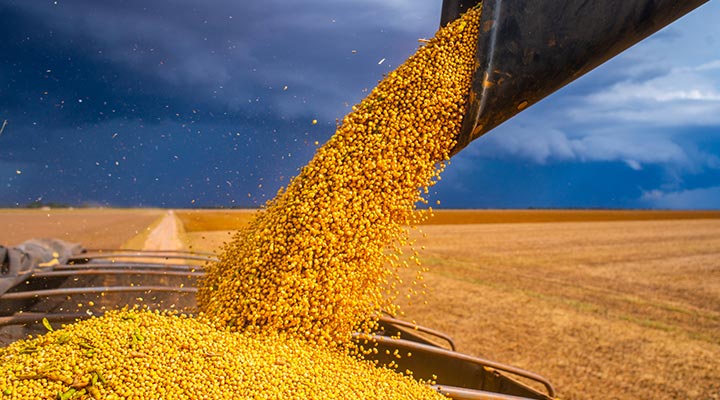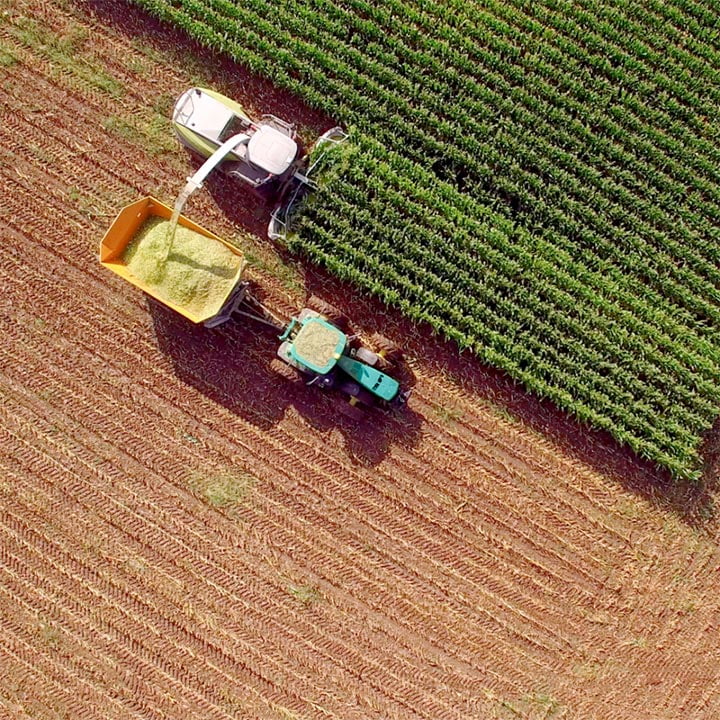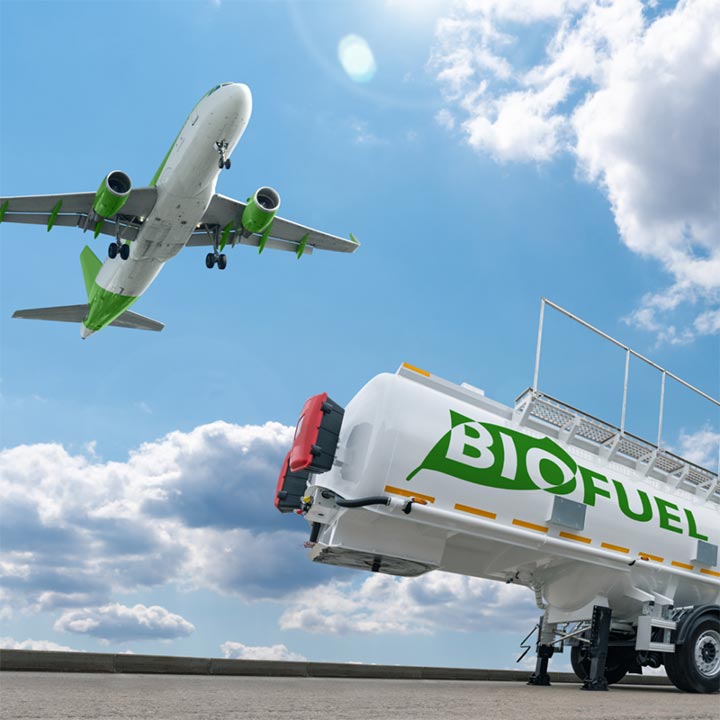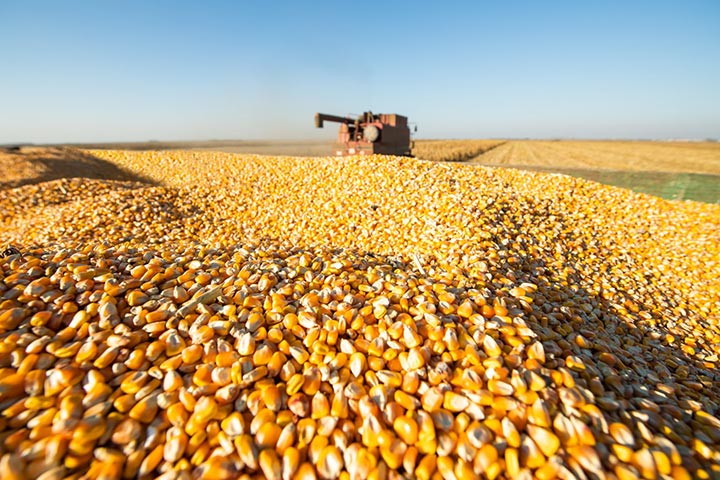
The future of biofuels: Getting the balance right
Global demand for biofuels is growing rapidly.
The International Energy Agency (IEA) estimates that growth at 41 billion litres, or 28%, over the 2021 to 2026 period.
But there’s a tension at the heart of that growing demand.
The need for lower emissions from transport and industry, and greater energy security on the one hand, and the integrity of the world’s food supply on the other.
Biofuels, which can be produced domestically, are an attractive alternative for countries reliant on the geopolitical uncertainty of their oil and gas supply, as demonstrated in Europe last year after the Russian invasion of Ukraine.
They’re also seen as a viable alternative to fossil fuels for countries with net-zero targets. Biofuels emit fewer harmful greenhouse gases (GHGs) than fossil fuels when burned and come from renewable sources: crops, plants and animal and organic waste.
The positive environmental impact of biofuels is contested.
The entire production cycle of some biofuels still produces significant CO2, especially through the distillation process for bioethanol; transportation of the biofuel; the indirect land use change for biofuel feedstocks; and intensive water use.
It’s also clear that biofuel production has led to food prices being significantly higher than they otherwise would be. We saw world governments quick to blame the Russian invasion of Ukraine for the squeeze on staples like vegetable oil.

But, the levels of supply of vegetable oils, sunflower seeds and wheat threatened by the war is significantly outstripped by the scale of all these products being burned as biofuels.
The war has been a trigger for a food supply shock, but the backdrop is years of tightening supply underpinned by government mandates and incentives for biofuels.
The demand for food and biofuel feedstock is price inelastic.
People still need to eat regardless of how much it costs, and first-generation biofuels are predominately produced from corn, sugarcane, wheat, rapeseed, and soybean oil, which means they’re competing with food production.
Biofuels aren’t the only driver of higher food prices, but it’s a crucial balance for producers and policymakers to get right in the coming decades.
The real question to understand is whether the energy security and green agenda from greater biofuel adoption outweighs the negative implications to global food security.

What are Biofuels?
The most common biofuels are bioethanol and biodiesel; they’re part of the first generation of biofuel technology.
Bioethanol is mostly produced from either corn, sugarcane or wheat. Whereas biodiesel is processed from rapeseed, soybean oil, used cooking oil (UCO) and palm oil.
During the oil crisis in the 1970s many countries considered the idea of commercial biofuels for the first time because of concerns about energy security.
However, it was only really Brazil that started to produce bioethanol at scale, mandating its blending with petrol in 1976 and then beginning the commercial processing of the biofuel from sugarcane.The country still has a significant share (c.30%) of the world’s biofuel production; the US and Brazil together produced 69% of all biofuels in 2018.
As more countries began to see the potential economic and environmental benefits of biofuels, government mandates became more widely used.
This government intervention has increased demand: mandates in the US and EU were largely responsible for a five-fold increase in global consumption of biofuels in the 2000s.
Critics of this approach have pointed out the negative implications for food price inflation as policymakers encourage a large and inelastic demand for biofuel feedstock at a time when the global food supply is already struggling to meet growing demand.
Bioethanol
Driving past a corn field in Illinois or a sugarcane field in Sao Paulo State, you might think these crops will end up as part of the food supply or feeding livestock, and indeed some do. But 45% of corn grown in the US is now processed into bioethanol; in Brazil bioethanol production uses more than half of its sugarcane.
In Europe the main feedstock for bioethanol production is wheat, a recent study by Transport & Environment (T&E), a sustainable transport campaign group in the EU, suggested that European countries were burning the equivalent of 15 million loaves of bread per day to turn into bioethanol.
The common method for converting biomass into bioethanol is fermentation, followed by distillation. Once distilled, bioethanol is most commonly blended with petrol to increase octane levels and cut down carbon monoxide and other emissions.
Biodiesel
The European Union is the largest global producer and consumer of biodiesel, followed by the US and Indonesia.
Biodiesel is produced mostly from vegetable oils, used cooking oils (UCO), or animal fats. The fuel is produced by transesterification – an alcohol like ethanol or methanol is used to turn the feedstock into biodiesel.
The International Energy Agency (IEA) is predicting a supply squeeze on global vegetable oils over the next 5 years. It expects the consumption of vegetable oil for biofuel production to increase 46% to 54 million tonnes over 2022-2027. This will raise the share of vegetable oil production directed to meeting growing biofuel demand from 17% to 23%.
We expect these market dynamics to support higher prices for biodiesel, and its feedstock over the long-term, which in turn may create further incentives for producers to prioritise biofuels over food production.
“The consumption of vegetable oil for biofuel production is expected to increase 46% to 54 million tonnes over 2022-2027.”
Aviation Biofuel
Aviation biofuel or sustainable aviation fuel (SAF) is a liquid fuel produced from a wide range of biomass, including vegetable oils, plant materials, and animal waste.
SAF is the only current pathway that makes net zero possible for the aviation industry and has the benefit, over, say, hydrogen, of being compatible with existing aircraft engines and associated infrastructure. However, it currently costs around twice as much as petroleum jet fuel to produce, and the current supply is only a tiny proportion of global demand.
The focus on moving the aviation industry away from fossil fuels should be encouraged. However, the implications of increasing demand for SAF are the same for bioethanol and biodiesel. Without more innovation and careful planning, it could have a greater environmental impact than expected and create further upward pressure on food prices.

Why Biofuels are driving food price inflation
It’s a simple calculation.
Globally there’s finite land suitable for crops or grazing livestock (the UN estimate that at 5 billion hectares or 38% of the world’s land surface.) Governments are increasingly mandating and incentivising biofuels to meet GHG emissions targets, and farmers are either using the same land as used for growing food crops or converting additional land like forests or jungles to meet the demand.
Take the example of biodiesel in Europe: inelastic demand means every litre of vegetable oil burned in European cars must be replaced somewhere else in the food chain. Africa and India turn to palm oil as an alternative which in turn creates deforestation in Asia.
The most important question for commodities markets is what would the price of these biofuel feedstocks be without mandates and subsidies?
It’s clear that the prices would be multiples lower.
Generations of biofuel mandates and farmers attracted to growing more biofuel feedstock because of high prices have resulted in pushing food prices higher to potentially unsustainable levels.
Undoubtedly the development of biofuels for transport, industry, aviation and shipping is important to the transition to cleaner energy. However, that progress should be balanced with the need to ensure global food security for all, not just for developed countries that can absorb higher food prices.
How do we mitigate the impact on food security?
Overcoming this challenge should be a priority for policymakers and producers. Biofuels are an important part of the energy mix in the future and fossil fuel decarbonisation, so how do we mitigate the impact?
Innovation will help.
Second-generation biofuels use non-food biomass as feedstock, like agriculture residue, grasses and woody residue. This clearly reduces the competition with food production. We’re also now seeing a third generation of biofuels made from algae which have real potential.
However, both these iterations of biofuel have struggled to get the investment and support they need to be adopted more widely.
Processing the agricultural and woody residues is challenging at scale, and the production of algal biofuel is currently too expensive to offer a viable commercial alternative.
More sustainable production practices that minimise the impact on ecosystems and reduce greenhouse gas emissions throughout the supply chain are also likely to be part of the solution.
Renewable energy is the future, and biofuels are an important part of that. However, there needs to be awareness of the inherent sustainability challenges in the current production approach.
The future of food and the planet is at stake.
